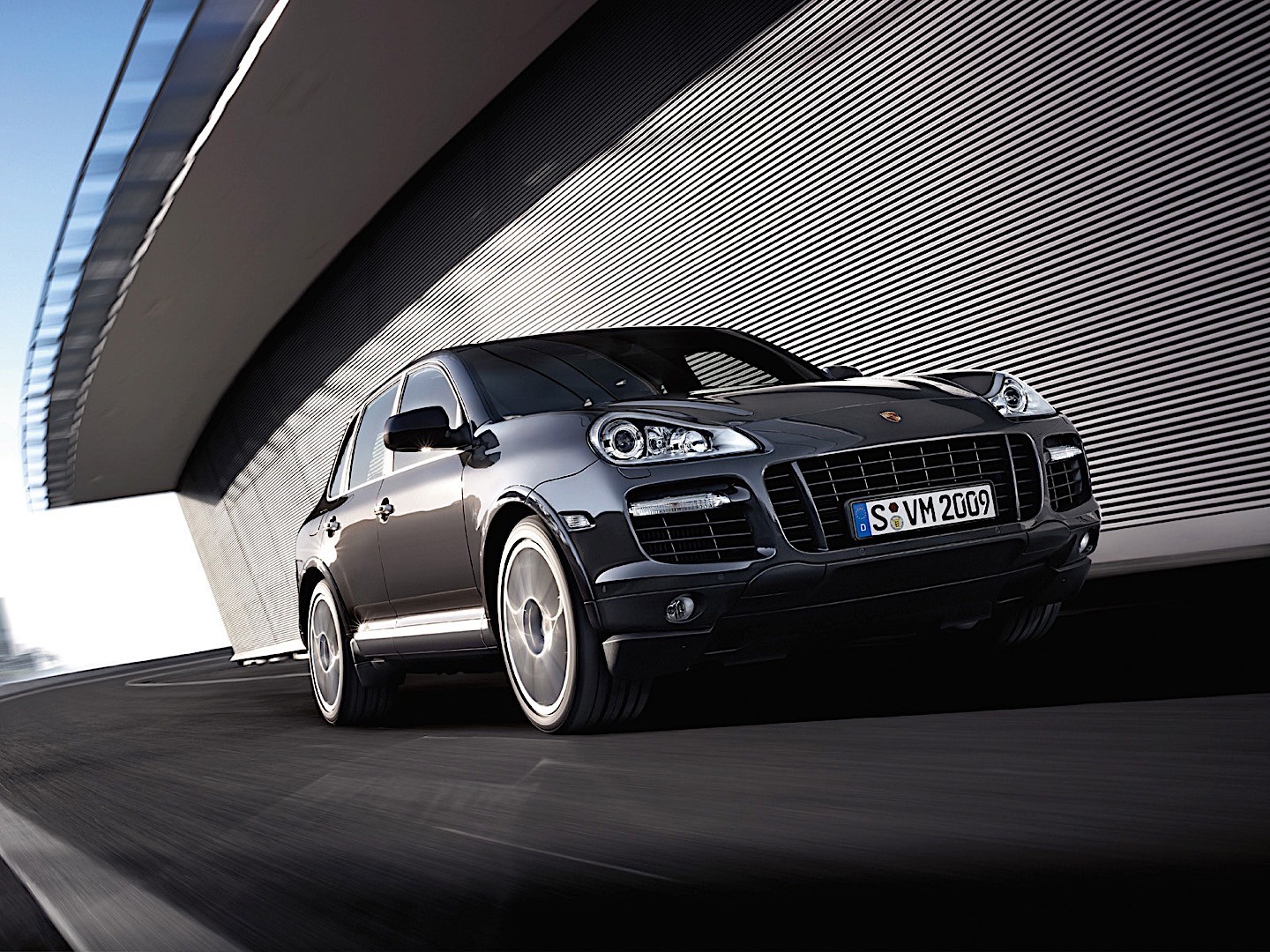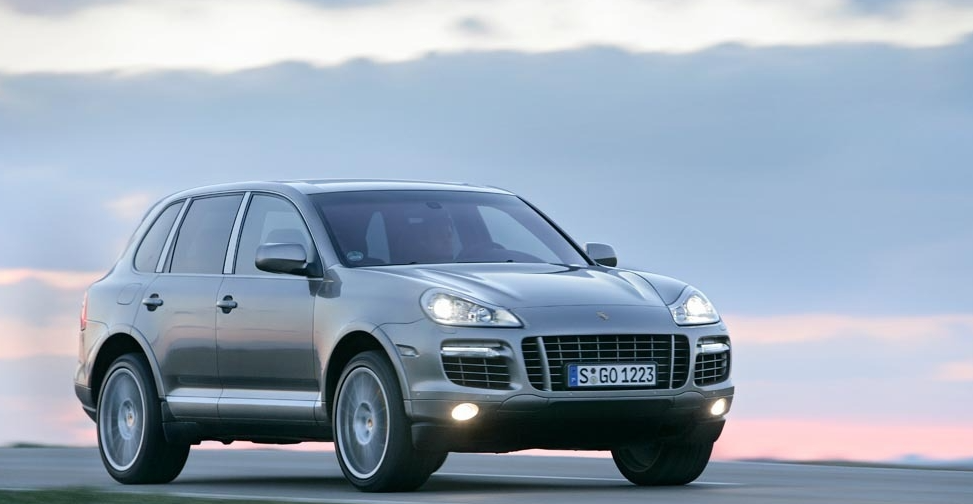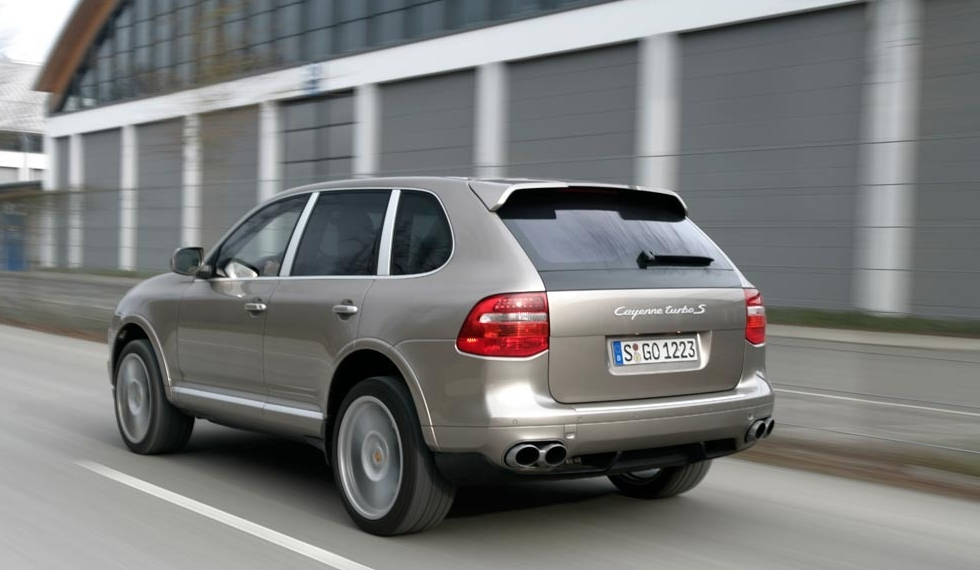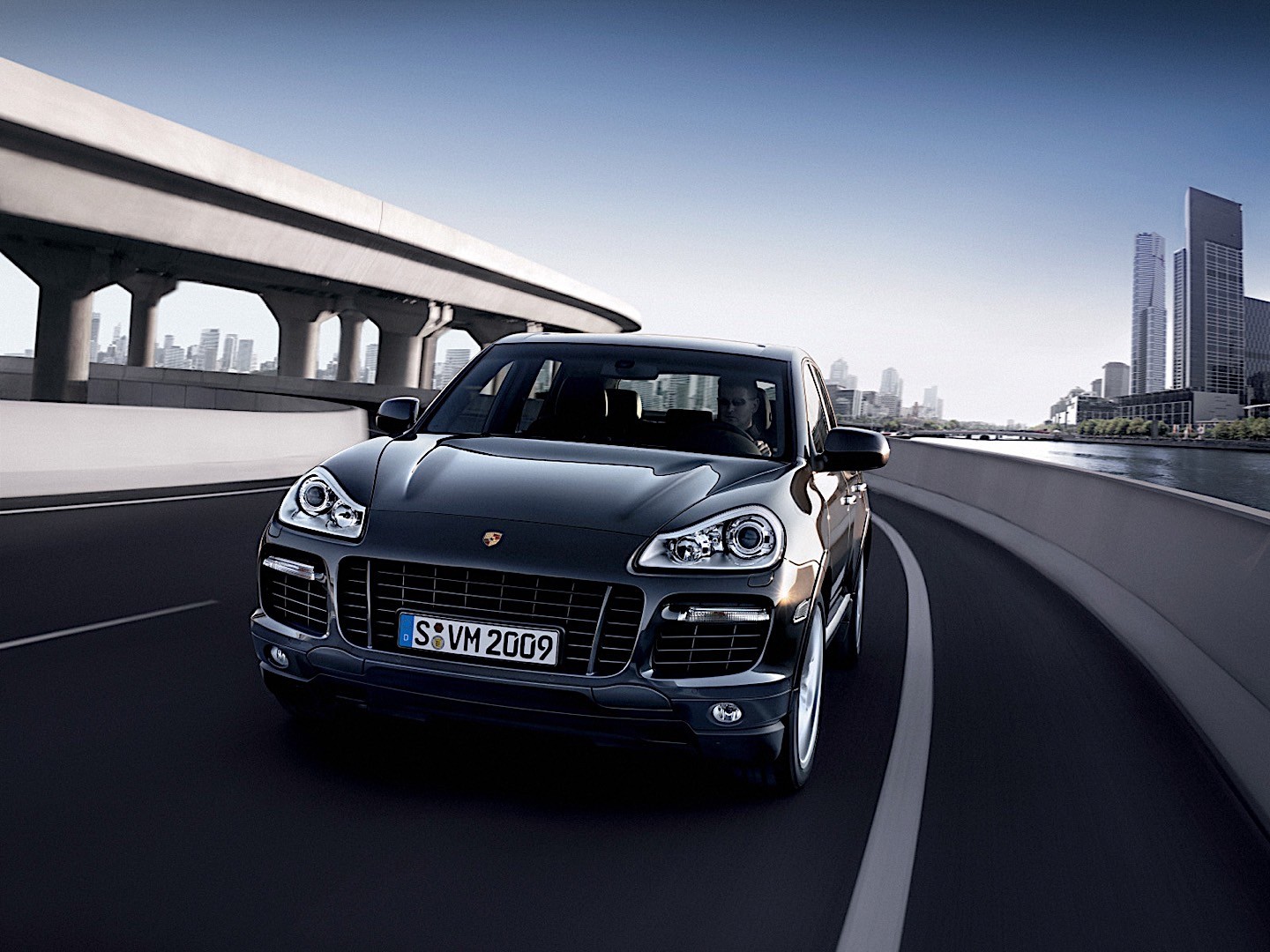(2008 – 2009) Porsche Cayenne Turbo S – Ultimate Guide
The facelift for the first generation of the Cayenne was introduced in 2007. More powerful in every respect – that is how the new generation of the Porsche Cayenne entered the market. In 2008 it was time for the flagship Cayenne Turbo S to get its massage.
Like the rest of the lineup, there was a new updated design and limited interior changes. The Cayenne Turbo S was fitted with a 550 hp direct-fuel injection system and VarioCam (variable valve timing). Despite offering more power, it obtained a better fuel-efficiency. A longer transmission ratio allowed the engine to run at a lower rpm for the same speed as its predecessor. For the all-wheel-drive system, the Porsche Traction Management (PTM) was enhanced to offer better traction in all conditions.
Pictures
Press Release
As befits any flagship wearing the renowned Porsche crest, the Porsche Cayenne Turbo S is the most powerful Cayenne ever built. Sharing the same essential 4.8-liter V8 engine as the Cayenne S, GTS and Turbo, the Turbo S boasts 550 horsepower and 553 lb.-ft. of torque. That’s a ten percent increase in power and a seven percent boost in torque over the Cayenne Turbo. The Porsche Cayenne Turbo S accelerates from zero to 60 mph (96 km/h) in 4.7 seconds on its way to a track-proven top speed of 174 mph (280 km/h). Like the Cayenne S and Cayenne Turbo, the Turbo S comes standard with a six-speed Tiptronic S driver-shiftable automatic transmission.
Given Porsche’s sensitivity to environmental concerns, despite the astounding performance capabilities of the Porsche Cayenne Turbo S, the new model carries no fuel economy penalty over the Cayenne Turbo. Both the 2009 Porsche Cayenne Turbo and Porsche Cayenne Turbo S are rated by the EPA to deliver 12 mpg in the city and 19 mpg on the highway. And both are certified as Low- Emissions Vehicles, Tier II (LEV-II).
Instantly recognizable as a Cayenne, and clearly identifiable as a unique model, the Turbo S rides on standard 21 inch alloy wheels carrying humongous 295/35 wide-aspect tires. Other unique visual clues to the flagship’s identity are the body-color wheel arch extensions and matte-finish air intake grilles. When seen from the rear, the Porsche Cayenne Turbo S is instantly recognizable by its dual-twin tailpipes made of precision cast aluminum, inspired by those on the Porsche Carrera GT. Finally, for those who want, the Porsche Cayenne Turbo S is offered in a unique exterior color: Lava Grey Metallic.
The passenger cabin of the Porsche Cayenne Turbo S boasts a unique look thanks to its standard two-color leather upholstery. Buyers have a choice of either Black/Havanna or Black/Steel Grey seating surfaces, as well as solid Black or Sand Beige. In addition, the dashboard and upper door panels have coordinating seams finished in the lighter upholstery color. The interior of the Turbo S is also distinct with its standard two-tone, padded leather steering wheel and carbon fiber door and dash trim. As with the Cayenne GTS, the Porsche Cayenne Turbo S boasts bolstered front and rear sport seats. The front seats have an extended memory feature and the three-person rear seat features contours for the outer positions.
Besides its more potent turbocharged engine, the Porsche Cayenne Turbo S differs mechanically from the Turbo by coming with Porsche Dynamic Chassis Control (PDCC) as standard equipment. PDCC features active control of body lean in curves for improved response, agility and increased passenger comfort.
Technical specification
- Engine: V8 with two parallel exhaust turbo loaders
- Fuel injection: direct fuel injection (DFI)
- Displacement: 4,806 cm3 (293.3 cu in)
- Bore: 96 mm (3.78 in)
- Stroke: 83 mm (3.27 in)
- Compression ratio: 10.5:1
- Max. power output: 404 kW (550 hp) at 6,000 rpm
- Max. torque: 750 Nm from 2,250 rpm to 4,500 rpm
- Gearbox: Six-speed Tiptronic S converter automatic
- Transmission: Permanent all-wheel drive Porsche Traction Management (PTM) with transfer gearshift
- All-wheel moment distribution: 38%/62% (Basic distribution front/rear)
- Chassis: Independent suspension
- front: via large basis double wishbones
- rear: multi-link suspension; air suspension with suspension leveling and ride-height control, including
- Porsche Active Suspension Management (PASM) and Porsche Dynamic Chassis Control (PDCC)
- Brakes
- front: six-piston aluminum monoblock fixed caliper brakes together with two-part internally ventilated
- brake disks with diameter of 380 mm
- rear: four-piston aluminum monoblock brake disks together with internally ventilated brake disks with
- diameter of 358 mm
- Wheels: 10 J x 21
- Tires: 295/35 R 21
- Steering: Servotronic speed-sensitive power steering
- Basic weight: 2,355 kg (DIN)
- Permissible total weight: 3,080 kg
- Acceleration
- 0-100 km/h: 4.8 s
- 0-60 mph: 4.7 s
- Max. speed: 280 km/h (174.0 mph)
- Fuel consumption
- 14.9 l/100 km (combined, as per NEFZ)
- 18.1 mpg (combined)
- CO2: 358 g/km (combined)
- Pollutant class: EURO 4

















